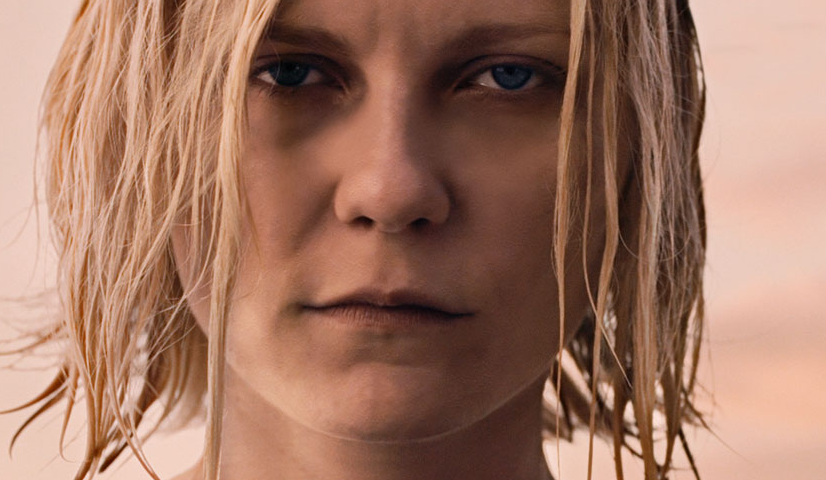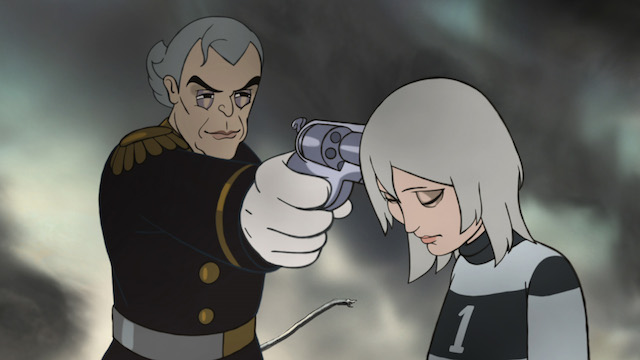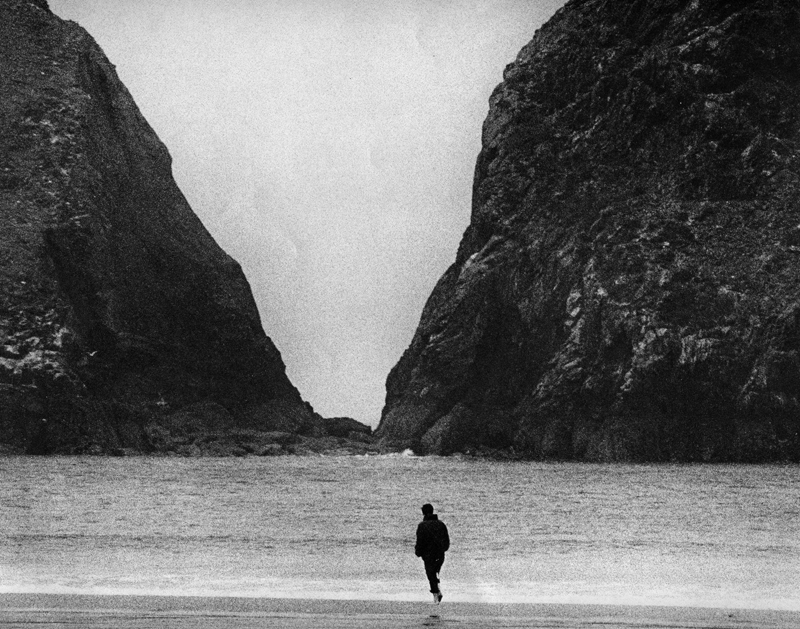What do we do when we reach the end of things? What does cinema look like, and how do we respond when we know the end is here? If you look at my list of favorite films of 2011, you’ll get some ideas. Split between films by Europeans like Lars Von Trier, Béla Tarr and Pedro Almódovar and American filmmakers such as Jeff Nichols and Spencer Susser, my favorite films share an apocalyptic vision of the world turned into a thing of beauty and emotional revelation. In these films, the apocalypse can be fantastical or sublime; the insane are sometimes the only ones who possess the ability to carve sanity of out an insane world; the real and the surreal often collide, and brutal economic reality becomes a thing of tremendous human dignity. Perseverance in a state of total economic, social or emotional collapse plays itself out even in the most brutal of circumstances – fatal diseases, mass murder, mental illness, and the apocalypse itself.
Certainly we live in dark times. The economy has turned the world upside down, so it’s not surprising that the end of the world plays a role in some capacity in many of the films on my list. Interestingly, however, the end of the world for the most part isn’t shown as some giant, dire, catastrophic event. Instead, what we see in many of these films is an acceptance of how things are, and in that acceptance a kind of freedom in giving ourselves over to the beauty that can be found at the heart of destruction. Whether through narrative content or the aesthetics of the films themselves, the end of things is shown as not altogether hopeless even if it is, well, hopeless.
While both the American and European films on my list confront the apocalyptic economy in some capacity, it is interesting to see the difference between their visions. The European films are much more universal, allegorical and historically complex while the American films tend to be grounded in barebones economic and social realism. Certainly, the European films have all of European history to take into consideration while America is a newborn baby on the historical scale. So, in a film like Lars Von Trier’s Melancholia, we see the collision not just of planets, but of a whole mix of cultural and social issues – from old world Europe to the new American rich, from capitalism and advertising to German romanticism and its connection to old European patriarchy and finally to a fantastical world of magic realism and the apocalyptically sublime. The apocalypse in Melancholia is indeed sublime. Never has there been a vision of the end of the world that is so overwhelmingly beautiful and liberating.
On the other hand, Béla Tarr’s The Turin Horse is the minimalist existential side of Lars Von Trier’s epic of apocalyptic excess. Filmed in Tarr’s signature black and white, the film is an exercise in reduction and survival as it spends nearly three hours focusing on a father and daughter going through the routine motions of their exceptionally bleak life in the brutal Hungarian countryside. Wind howls in the background like the seven horses of the apocalypse stampeding in the distance. The film is named after the horse which the father uses to earn a living, but the horse is stalled in the stall. It is a sick horse for a sick economy. The horse isn’t moving and what little economic stability the father and daughter have is stuck in this claustrophobic and existential world of survival. Get up, get dressed, battle the wind to get to the well, boil a potato, go to sleep, start again. For three hours, over and over. Yet, this film is beautiful and captivating not just because of Tarr’s phenomenal aesthetics, but because we are forced through the film’s minimalism to find beauty even in the most brutally bleak, repetitious and hardcore economic reality portrayed in the film. Every slight change of light, shadow, sound and human gesture becomes a thing of profound beauty and importance.
Where Béla Tarr’s film is one of survival reduced to austere minimalism, Alejandro González Iñárritu’s Biutiful throws us headfirst into the chaotic dog-eat-dog slums of Barcelona. The entire environment is congested with the dirty money of global capitlalism. The main character Uxbal is struggling for survival in a world where it is impossible to survive. He has cancer literally and is also infected with the cancer of capital which eats away at every frame of this film, yet the film is, as its title suggests, beautiful. Even when there is no hope for Uxbal’s survival, even when dozens of migrant workers lie dead on a basement floor, when a mother is going out of her mind and the whole world is coming unglued, the film itself is such a thing of beauty that it reminds us of the capacity humans have for being beautiful even when the world gets uglier every day.
Susanne Bier’s In A Better World is the second film on my list (along with Melancholia) from the Dogme 95 school of filmmakers. Like so many other of my favorite films this year, Bier manipulates melodrama to show the underlying pervasive violence of the world (whether the literal violence of war or the insidious violence of global capital) and the legacy it leaves on our children. The film, like Biutiful, shows violence as something inescapable, something that is inherited and passed on, but it also leads us to the edge of hope. It shows two young boys who through the legacy of violence are complicit in a brutal explosion, and it takes us literally to the edge of suicide and self-destruction, but then Bier undoes the melodrama formula, pulls back, and provides a glimpse of possible reconciliation, However, as in all the other films on my list, this moment of reconciliation is very small and personal and by no means global. These movies for the end of times are about how we can get through it and hold onto something beautiful even if it is inevitable that the world is collapsing around us.
Pedro Almódovar’s The Skin I Live In is my wild card film from the European mix. A horror melodrama in high Almódovar style, the film doesn’t really fit into the apocalyptic thread of the other films except for that it is about a kind of identity apocalypse when a mad doctor kidnaps a shop boy and turns him into a girl. In this case, the insane truly is the insane. Almódovar disrupts the world of cinematic expectations and completely unsettles the audience by making us question the very nature of identity and gender. That the doctor is filthy rich has to be taken into the equation. Is it through capital that he is able to assassinate the identity of the shop boy and force him to be someone else? The Almódovar film is an unsettling story for an unsettling world where all of us compromise our identity in one form or another for survival, but mostly it’s just a great, crazy, entertaining over-the-top Almodovar extravaganza of camp, excess and an homage to a ton of movies about mad doctors and split identity.
Like the Von Trier film, British filmmaker Lynne Ramsay’s We Need To Talk About Kevin is another European film about America. A kind of horror film about class, maternity and guns, it opens with a horrific scene of bodies seething in blood and chaos. It could be any massacre, any nightmare, any slaughter. The scene is simultaneously horrifically real yet abstractly stylized and somehow beautiful, which itself is disturbing. How can something so violent and ugly be so beautiful? But that is a thread that runs through so many of these films. The Ramsay film is also a hybrid film fluctuating between the super stylized aesthetics of the wealthy environment of the family home, whose state of sterile economic privilege inscribe it with a kind of surreal otherworldliness, and then the almost “Kitchen Sink Realism” of the mother’s life after she falls from grace when her son shoots up a high school. The movie, not surprisingly, becomes much more “real” when the mother is stripped from economic privilege and is forced to work menial jobs to survive in her barebones house marked by her fall from class and privilege. This film is probably the most disturbing on my list because it offers so little hope and its depiction of human relationships is so empty. Like other films on my list, We Need To Talk About Kevin questions the legacy that our children bear in this world of global capital and war, where violence and greed are a daily diet provided from no end of media sources. But even in this Bad Seed meets The Omen narrative for the 21st century, there is a faint a glimmer of humanity that rises from the surface. You just have to catch it before it disappears. I must note also that Tilda Swinton pulls another amazing performance out of herself in this film.
Moving onto the American films on my list, I must note that these films are very much grounded in economic and social reality. Whatever elements of the fantastical that exist in them always turn around and come back to real economics. These are not sprawling all-encompassing narratives. They are little stories of dreams gone bad and desperate hopes for survival or at least coping. Of course, America is a country with a very short history, and it was founded on the notion that anyone could succeed with hard work. But that dream has crumbled fast over the past few years, and we see the tattered remnants of the American dream and how hard the economic collapse has hit the working class in some of the small films on my list.
Spencer Susser’s Hesher plops the audience in the epicenter of the gutted American dream. The title character literally rises on the scene out of an abandoned housing development and enters the life of a home that is practically dead with grief and economic despair. Hesher is like some kind of heavy-metal Shaman who enters the family’s home in a beat-up black van and a blur of tattoos and long hair. He barrels through the movie like a hurricane of rock, porn, flames, and anarchistic glee, and he brings hope into a home that seems to be stripped of any possibility for a future. The apocalyptic tone of Hesher is quiet, but the noise and disruption of this anarchistic deus ex machina is not. Hesher is a movie where hope comes in explosions and the sincerity and freedom of saying “fuck you” to a system that is ultimately meaningless. It is only through disruption of order that we can get back to a humanity that has hope.
Jeff Nichols’ Take Shelter is the ultimate story of the paranoia that the bad economy breeds. Though on the surface, the story is about a paranoid schizophrenic who suffers hallucinations that lead him to believe that a tornado is coming and will wipe everything out, we realize that his paranoia is very much grounded in economic reality. He pours everything into building a shelter out of an empty shipping container to protect his family from the storm. But as the movie moves through all the ways in which the economy puts paranoid pressure on him – everything from pumping gas at a gas station to the fear of losing his job and health insurance – we realize that he has every reason to be paranoid. The storm that is coming is the economic tornado that is undoing so many American homes. In the end, he proves not to be just another crazy person, but a visionary as he and his family stand to meet the end (not unlike the end of Lars Von Trier’s Melancholia). What at first seems like fantastical hallucinations prove to be visions of economic reality. I also must note here, that Michael Shannon once again delivers a top notch riveting performance of someone becoming unglued and trying to hold it together (but failing).
J.C. Chandor’s Margin Call may be the best film about capitalism ever made. The apocalypse in this film is the great economic collapse of 2008. Situated within the insulated confines of Wall Street on the eve of the collapse, the movie shows the hollow body of capitalism as it really exists – a game of numbers and chance, an addiction gone out of control, a force that has become its own kind of insane organism. It’s about the illogic of the logic of capitalism, the nebulous nature of money, and the way that it’s used to grab power and control and destroy people. The best line in the movie is delivered by Jeremy Irons when he says, “Money is just pieces of paper with pictures on it so people don’t kill each other for food.” The problem is that “money” has become so complex, so woven into the global economy, so much a part of every inch of the world that capitalism itself is the face of the apocalypse.
This leads me to Contagion, Steven Soderbergh’s cool, clinical and slick bio-horror movie about a plague that rapidly wipes out a large chunk of planet earth. Like other movies on my list, this film feeds on paranoia, but when looking at it closely we realize that the mechanisms for delivering the plague and spreading the contagion are the forces of capital and not some kind of random biological threat. Paranoia itself is a virus, and it is a virus that is promoted by those who want to maintain power and control. A population infected with paranoia is a population much easier to control. The Soderbergh film provides the perfect bridge between the American and the European films on my list. The hyper-stylized cinematography sets the film in the realm of the fantastical (the sci-fi environment of the not-too-distant future), but the effects of the contagion itself are profoundly real. Never has a water glass or cell phone looked so menacing!
Contagion and its gorgeous aesthetic delivery brings us back to the loop to Melancholia where something so dire (e.g. the end of the world) can be so damn beautiful. Melancholia, to me, was the life changing movie of the year. So many people I have talked to were moved beyond words by this film. I think that it really raises the bar and takes the Era Of The Apocalypse to a place where we can look at the End of Things straight in the face and recognize what beauty we can find in it. There is something profoundly liberating in this kind of acceptance. These are dark times, yet the films that came out this year took the darkness and often turned it into art of profound beauty and human compassion. It’s not that these films are great treatises on hope, but they are instances when we can immerse ourselves in beauty, recognition, release and pathos. These films certainly beat the picture we get on Fox News. If I have my choice, I’ll take my apocalypse filtered through beautiful cinematography and a healthy dose of the fantastically sublime mixed with economic realism to bring the whole thing down to earth.
Feature image from a promotional still for Melancholia.




